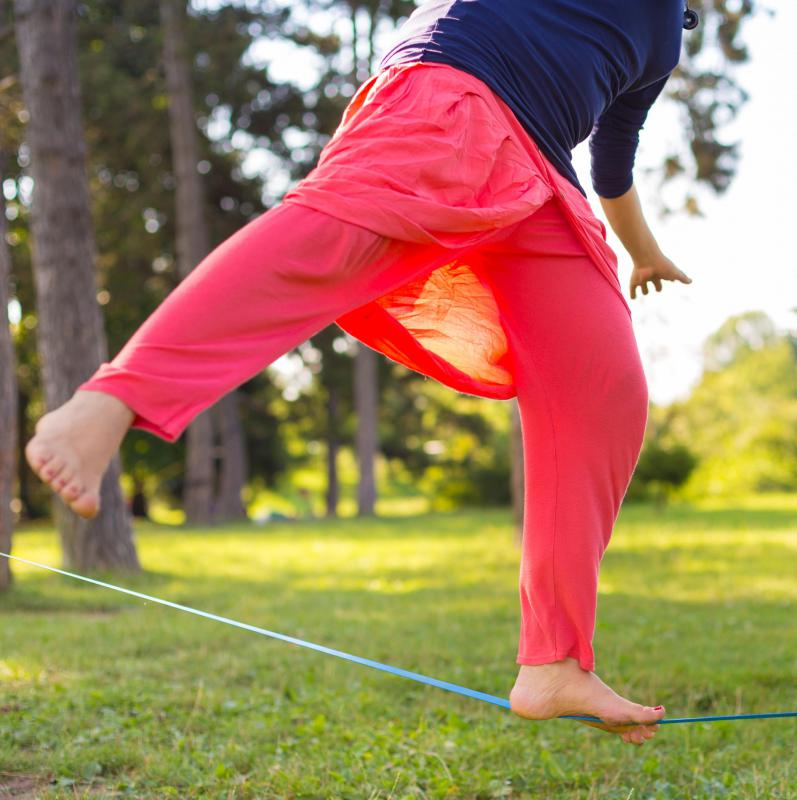At WiseGEEK, we're committed to delivering accurate, trustworthy information. Our expert-authored content is rigorously fact-checked and sourced from credible authorities. Discover how we uphold the highest standards in providing you with reliable knowledge.
What are the Different Types of Balance Board Exercises?
Balance board exercises can improve coordination, increase strength, and help one develop better balance. Most balance board exercises are performed by standing, sitting, or kneeling on the board while trying to balance. There are exercises for beginners, exercises designed for athletes, and exercises to aid in strength training.
The first exercise a beginner may want to attempt with the balance board is to stand on the board and try to keep the edges from touching the ground. It takes some getting used to, even for athletes in superb physical condition. Trainers recommend holding onto a chair or stationary object when using the board for the first time.

Another exercise for the beginner is to see how long he or she can balance on the board. It takes strength to maintain one’s balance for any length of time. After one feels comfortable doing this exercise, he or she can increase the level of difficulty by learning to balance while standing on one leg.
Once a person has mastered the technique of maintaining balance on the board, he or she is ready for more advanced balance board exercises. One of these exercises is the crunch. The first step is for the person to sit on the board with bent knees and feet on the floor. After determining the center of gravity, the next step is to lift the feet off the floor and bring the knees to the chest, all while keeping the edges of the board from hitting the floor. This exercise strengthens the core and shouldn’t be attempted by anyone who has back problems.

The squat is another exercise that should only be attempted after one has learned to stand and balance on the board. When first trying a squat, the person should bend his or her knees just a little to learn how to balance the board in that position. After bending the knees a little more each time, and successfully maintaining balance, one can start doing repetitions of deeper squats.
One of the balance board exercises that will build strong muscles in the arms and core is the balanced push-up. This exercise is performed by holding the sides of the balance board and doing a push-up while keeping the edges of the balance board off the floor. There are several other balance board exercises, but these exercises are a good start toward getting fit and firm while improving balance.
AS FEATURED ON:
AS FEATURED ON:












Discuss this Article
Post your comments